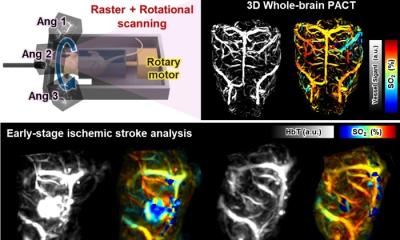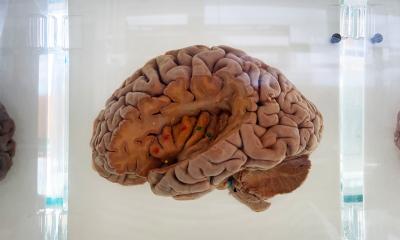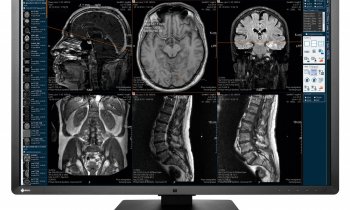Source: Pixabay/skeeze
News • Cerebrovascular disease
Stroke deaths decrease all over Europe – but it's too early to cheer
New research, published in the European Heart Journal, has shown deaths from conditions that affect the blood supply to the brain, such as stroke, are declining overall in Europe but that in some countries the decline is levelling off or death rates are even increasing.
Cerebrovascular disease includes strokes, mini-strokes, and narrowing, blockage or rupturing of the blood vessels supplying blood to the brain, and it is the second single largest cause of death in Europe after heart disease, accounting for 9% of deaths in men and 12% of deaths in women each year. The EHJ study used data from the World Health Organization (WHO) to examine mortality trends in three particular types of cerebrovascular disease in Europe for 37 years between 1980 and 2016: ischaemic stroke (a lack of blood flow to the brain), haemorrhagic stroke (bleeding in the brain) and sub-arachnoid haemorrhage (SAH), in which bleeding occurs between the brain and the surrounding membrane. Not all countries had data available for the full 37 years.
Recommended article

Article • World Brain Day
Stroke is over (if you want it)
The fourth World Brain Day (July 22) revolves around stroke – how to detect it, how to prevent it, how to treat it. Raad Shakir, president of the World Federation of Neurology (WFN), seizes the opportunity to raise awareness about a disease that is becoming more common globally – but also preventable to a large extent.
The researchers, led by Dr Nick Townsend, associate professor in public health epidemiology at the University of Bath (UK), found that across the whole of the WHO European region for the most recent period for which data were available, there had been significant decreases in death rates from all three types of cerebrovascular disease in 33 (65%) countries for men and women. However, there had been increases in three countries (6%) for men (Azerbaijan, Georgia and Tajikistan) and in two countries (4%) for women (Azerbaijan and Uzbekistan). There was evidence of a recent plateau in trends (where the rate of reductions in mortality in the most recent period was less pronounced than in the previous period) in seven countries in men (Austria, Denmark, France, Germany, Greece, Czech Republic and Hungary) and six countries in women (Austria, Belgium, France, Germany, Ireland and Switzerland). There were also a number of countries (eight in men and ten in women) in which death rates showed no change over the most recent period. This means that in both sexes, more than one third of countries showed either a slowing of the decrease in death rates, no decrease, or an increase in the most recent trend.
Age-standardised mortality rates from stroke, which adjust to take account of differences in population size and age structure, were higher in men than in women for all countries. For stroke, they were much lower in western Europe than the rest of the continent. In men, death rates in western Europe ranged from 49 per 100,000 of the population in France to 131 per 100,000 in San Marino. In central Europe, male death rates ranged from 110 per 100,000 in the Czech Republic to 391 per 100,000 in Bulgaria. In eastern Europe, male death rates ranged from 82 in Estonia to 331 in Russia per 100,000. In central Asia, they ranged from 152 in Armenia to 345 in Azerbaijan per 100,000. In the UK, the death rate was 68 per 100,000 in men and 65 per 100,000 in women.
When the researchers looked at each of the three types of stroke individually, data were only available by stroke subtype for 43 countries; most of the countries with missing data were in eastern Europe and central Asia. Over the whole period since 1980, more than half of countries with available data had significant decreases in age-standardised death rates from ischaemic stroke (56% of countries in men and 51% in women) and haemorrhagic stroke (58% and 67% of countries respectively). However, eight countries (19%) had increases in death rates from ischaemic stroke among men and nine countries (21%) in women, compared to none for haemorrhagic stroke. Although significant decreases in death rates from SAH occurred in 56% of countries for men they only did so in 42% of countries in women. Two countries (5%) showed increases in SAH among men and four countries (9%) did so for women. “When we looked at the type of stroke and for the most recent period for which data were available, the trends could be quite different,” said Dr Townsend. “This shows that considering all cerebrovascular disease over the whole period hides a lot of the story. In the most recent period, there were increases in ischaemic stroke in eight countries among men and nine for women, increases in haemorrhagic stroke in three countries in men and one for women, and increases in SAH in five countries for men and eight countries for women."
It is not enough to consider cerebrovascular disease as just one condition and we must consider each individual stroke type
Nick Townsend
He continued: “Over the last 35 years there have been large overall declines in deaths from cerebrovascular disease in the majority of European countries. While these declines have continued in more than half of the countries, these have not been consistent across Europe and our analysis has revealed evidence of recent plateauing and even increases in stroke deaths in certain countries. We have seen this in both sexes and in countries across the whole of Europe, particularly in eastern and central Europe and central Asia. We have also found differences in death rates by stroke type. Therefore, it is not enough to consider cerebrovascular disease as just one condition and we must consider each individual stroke type. Our findings highlight a need to counter inequalities by understanding local contexts in disease occurrence and treatment. In particular, we need to encourage the implementation of evidence-based recommendations in the prevention and treatment of stroke in all countries. Many countries have been able to reduce the mortality burden from stroke in recent years. We must understand why this is not happening in all countries and identify barriers to the implementation of evidence-based recommended practice in countries that are slow to adopt them. In addition, we only studied between-country inequalities, but we must consider within-country inequalities as well if we are to have an impact on the disease.”
The researchers say that SAH amongst women was the only type of stroke for which more countries demonstrated plateauing or increasing trends than decreases in recent years. A less pronounced decrease, no significant change, or a significant increase in death rates from SAH, was found in 25 countries for women. “General risk factors for SAH include familial predisposition and disorders of the blood vessels, leading to aneurysms. Smoking, hypertension and heavy drinking have also been found to be significant risk factors, as with other stroke types and cardiovascular disease,” said Dr Townsend. “Interestingly, when we compare mortality from stroke sub-type by age we find that death from SAH is more common at younger ages. In the UK, for example, around 60% of deaths from SAH in women occur before the aged of 75, commonly termed premature. This is much lower in cerebral haemorrhage, which is closer to 25%, and lower still in ischaemic haemorrhage, which is around 15%. Despite SAH being much less common than the other stroke subtypes, this greater mortality at younger age groups need further investigation and intervention.”
Although this study did not look at the reason behind these changes, he said it was unlikely that there was a single reason for the overall decline in cerebrovascular disease. Improvements in treating the disease, including new drugs and improved surgical techniques, played a role, as did prevention strategies that encouraged people to improve their lifestyles by stopping smoking, drinking less alcohol, improving their diet and taking more physical exercise. Possible reasons why the trends towards lower death rates might be levelling off or even increasing in some countries could include the increasing prevalence of obesity, diabetes and higher cholesterol levels in recent years.
Limitations of the study include the fact that the researchers used data submitted to the WHO by individual countries, and which were either absent or incomplete from some countries and of variable quality; the analytical approach used to identify trends is a simplified method and may not give the full picture of plateauing in some countries over some periods; and the study describes the trends but cannot give reasons for them.
Source: European Heart Journal
15.08.2018











